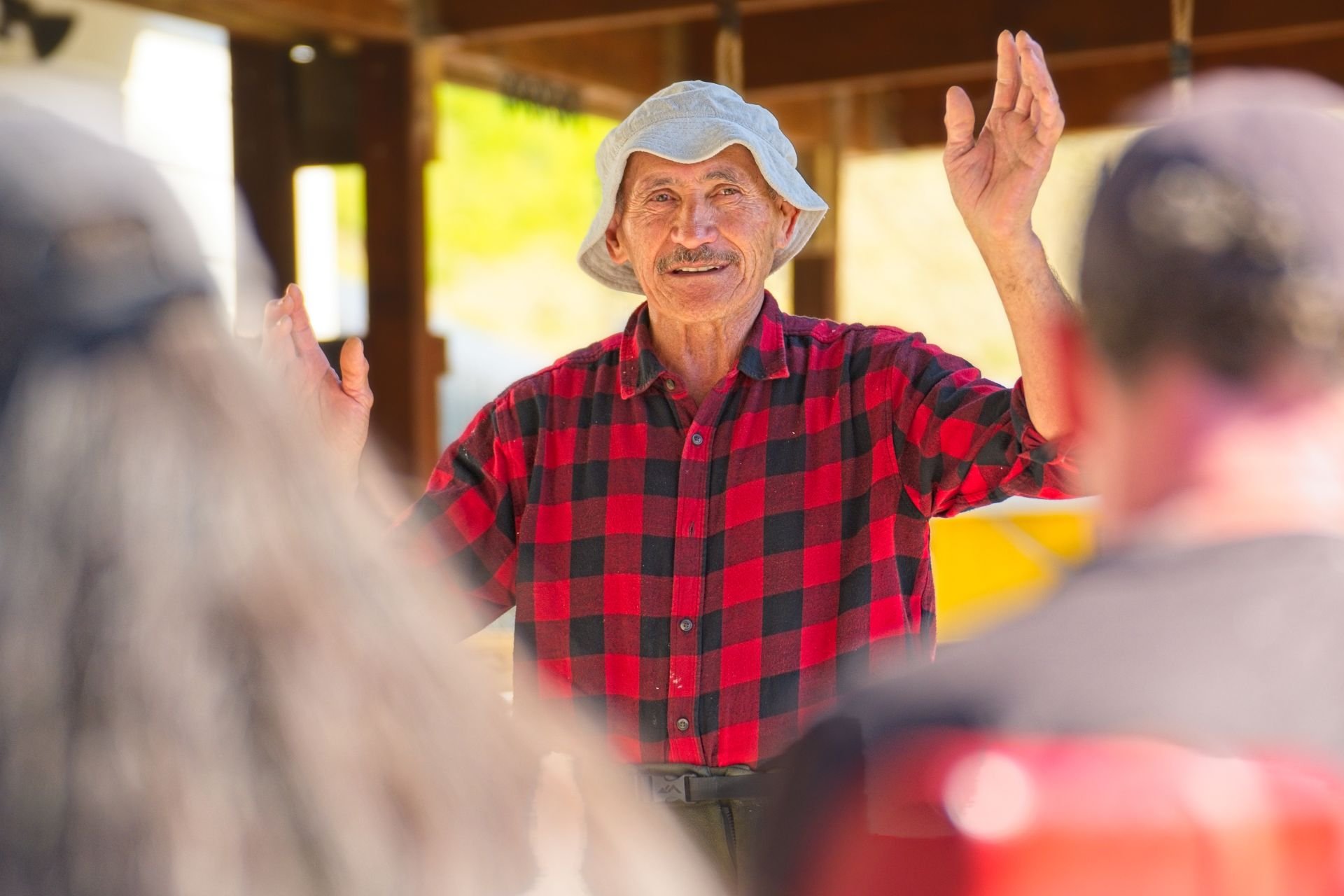RANGI RAROA - A STORY FROM THE EAST
A Q&A with Rangi Raroa - father, farmer, kaitiaki of Te Kautuku.
At East Coast Exchange (ECX), our kaupapa lives through the whenua - and the whānau who care for it. It’s not about publicity or polished presentations, but the quiet, steady work of those holding it down for the next generation. That’s why we’re proud to share another chapter in our Our Stories series, this time with someone who’s been doing exactly that for decades.
Rangi Raroa, at home on the whenua.
Rangi Raroa is a farmer, father, and descendant of Te Kautuku - 930 hectares of whenua Māori perched where the Waiapu River meets the South Pacific Ocean in Rangitukia. But labels don’t really capture it. This is home. This is inheritance. This is responsibility. This is whenua tuku iho, handed down through generations. Rangi’s story is one of adaptability, determined conviction, and deep connection. From working the land in ways that nurtured both soil and stock, to weathering the pressures of limited resourcing without compromising the whenua, his path reflects the strength of a descendant entrusted with holding this place in the care of mana whenua., he's quietly shown what it means to hold on, change tack when needed, and stay true to place.
So we had a kōrero to learn more - from the stories beneath the ridgelines to the big shifts underway today.
Q&A WITH RANGI
ECX: Tell us a bit about your connection to Te Kautuku. Where did it all start for you?
Rangi: I was born here. Even when I was away for a time growing up, this has always been home. When I took over management, Dad just said, “Boy, make sure you look after the land and don’t do anything that will jeopardise it.” That’s been the line we’ve followed. I see that as the inheritance. Not just the land - but the responsibility to protect it.
ECX: What makes this whenua different from others in the region?
Rangi: It’s still ours. We didn’t lease it out when times got hard. A lot of other blocks around here had to - books fell into the red, stock got sold off, and eventually, they ended up leased out. But we’ve always said, nah. We’ll make it work. Might not always be flash, but our name’s still on the gate - and we owe no one.
ECX: Has it always been easy to keep things going?
Rangi: Not really. You’ve got to be open to change. Sheep didn’t suit the land - too many hills, pigs were a problem - so we phased them out and stuck with cattle. We planted poplars back in the day, not pines. Everyone was pushing pine, but we wanted trees that gave back - shade, erosion control, feed for the cattle when things got dry. We’ve always tried to work with the land, not against it.
ECX: And now you’re in a regeneration phase. What’s driving that?
Rangi: Farming alone wasn’t going to cut it long-term. So we started thinking differently. We’ve already retired more than half the farm, and the long-term aim is to restore at least 85% back to native cover. We’ve got 200 hectares of existing ngahere, and the rest is in motion. We’ve also been working on pest control, nursery development, and cultural trail restoration. It’s about restoring balance to uplift the mauri of this place.
ECX: Are you working with others on this journey?
Rangi: Yeah, it’s not just us anymore. We’re working with Toha, ECX, Ngahere Network, Ag Research and other partners. Renee - my daughter - she’s been a big part of opening those doors. With the data we’re collecting, it might help others trying to do the same. It’s still our kaupapa - but we’re using tools that give us more options. That’s where things like MAHI tokens come in too. Recognition for the work. New revenue streams. It all adds up.
ECX: Te Kautuku has been the site of the first pilot for East Coast Exchange - testing how funding, data, and whenua-led action can come together. What’s that been like for you and the whānau?
Rangi: We’ve been pretty stoked, to be honest. Te Kautuku was the first place used as a pilot, and it’s meant we’ve been able to get some support behind what we’re already doing here and what we want to do. Through Renee’s work, we’ve linked in with Toha and East Coast Exchange, and now we’ve got six projects underway - pest control, native planting, trail restoration, all of it. We’re still leading it in our own way, but it helps having the right tools and backing to carry it forward.
Showing the way on Paikea’s trail.
ECX: How involved is the whānau these days?
Rangi: Everyone plays a part. Esther, my wife. Renee, Dayna, the kids - Jayden, Aiesha - even the little ones. The moko are getting stuck in too. Whether it’s planting, planning, carving trails, or collecting water samples, they’re all part of it. It’s important they see what goes into looking after the land. I’m not gonna be here forever, so we’re trying to hand it over the right way - making sure everyone understands the why.
ECX: What kind of stories are held in the whenua at Te Kautuku?
Rangi: Heaps. We’ve got wahi tapu here, sacred areas, plus a natural boundary with the moana. People still come here for rongoā - medicine from the ngahere. There’s the Paikea Trail too. That story’s been passed down - how Paikea met Huturangi here, which began the line of Ngāti Porou. And the site of the old whare wānanga, Taperenui-a-Whatonga, is still here. It might just look like another paddock to some, but the history runs deep. That’s why we need to protect it. So our mokopuna can still walk it and know what it means.
ECX: For others out there holding whenua, what would you say?
Rangi: There’s always a choice. It might feel like pine or lease is the only way - but it's not. You can find ways to keep the land and look after it properly. It won’t be easy. But we’re still here, still learning, still trying. That’s the way forward.
Rangi’s story is a quiet one. No fuss. No fancy title. Just decades of showing up, working the whenua, listening to what it needs, and making changes when it counts. It’s a model that doesn’t chase trends - it honours whakapapa, and finds ways to bring whānau home.
Through ECX and the Toha system, whenua like Te Kautuku are showing how innovation and indigenous wisdom can work together. And thanks to leaders like Rangi - who don’t seek the spotlight, but carry the legacy anyway - more and more people are seeing that it can be done.
Not by selling it off. Not by committing it to any one land use or monoculture. But by holding tight, understanding its uniqueness and differences. Regenerating. And walking the whenua, one ridge at a time.🌱
Looking out, looking after.




